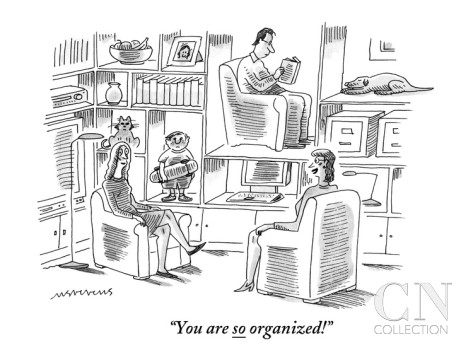I was able to accomplish a lot this week and am feeling pretty good about where I am in the project. I finished sorting and inventorying the Garden Fair event (the organization’s primary event, and therefore very important) records. Someone in the past had already organized many years through folders, so that gave me a great head start. I added the extra records I found to the appropriate existing folders, and I was able to add three more years’ worth of records that didn’t already exist. Now I only have sporadic gaps from 1969-1980. I also created subseries for publicity materials and photographs, although I did not inventory them because these subseries seem like less of a priority. With the time constraints I have, I’m trying to focus on identifying the most important records to work on.
For organizing information, I changed the structure of how I was going to sort Auxiliary records. Originally I planned to have a Garden Fair series, with subseries for photographs, invitations, etc.; and an Auxiliary series for everything non-Fair. But after more consideration, I decided to create one Auxiliary series and turn everything into subseries, further dividing by folder where appropriate. It makes much more sense to have it as one giant series than two smaller, somewhat duplicative series.
I also finished inventorying all of the annual reports from 1856-1931. The good news is that I have multiple copies of some years, but the bad news is that some of them have what I think is mildew. I discovered I have three biographies or stories written by former clients from when Edgewood was an orphanage, which is very fun—I thought I only had one. If I ever get the chance to do an oral history interview with a former orphan, these will be very helpful.
I now have four sorted and inventoried boxes, and just a few more to go through.
I started making digitizing plans by identifying individual items and/or subseries to digitize. Everything from 1969 and earlier is automatically on the list for digitizing. Everything from 1970-1999 I’m less sure of and need to talk to certain staff to see what their needs are. I’m not inclined to spend the time digitizing things after the 1980s, but there’s fewer records in the 1970s so I’m more comfortable with adding those to the plan.
I did more prep work for my first oral history interview, researching the staff names the interviewee mentioned and confirming his admission and discharge dates to Edgewood. I’ve already come across one issue during my research; the date he gave me for when he moved to Edgewood was off by a year. I hope he doesn’t try to debate me on it.
I had the chance to talk to the former executive director of Edgewood from the time the interviewee lived there. He was able to confirm some of the staff the interviewee mentioned, and tell me stories about his time at Edgewood. It was a very fun conversation and he said to contact him anytime I have questions, which I will! Because of the lack of records from that time period (late 1950s to early 1960s), it is incredibly helpful to have someone to turn to for information. He’s my only connection to the time period. He lives out of state now, but I hope he comes back so I can do an oral history interview with him.
Finally, I wrote out the first draft of questions for my second oral history interview, which is with a former Auxiliary member who was at the first ever Garden Fair in 1967, and sent those out to staff for feedback. I made copies of the 1967 Garden Fair planning materials to avoid having to keep going back in to the box when writing the oral history questions and doing research.
Whew! The fun discovery phase is pretty much over, but I’m finding the sorting and organizing phase really fascinating.
